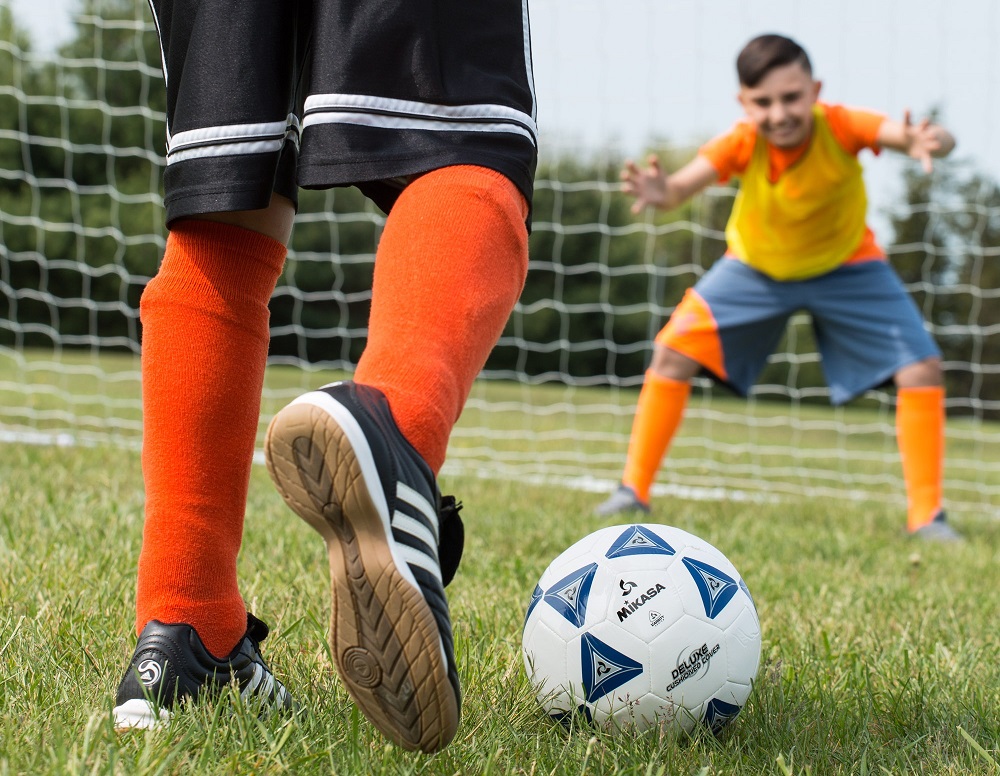
If you’re unsure which football is best for the needs of your program, event or activity – this guide will help you. There are many things to consider like where you will be using it, how old and the size the participants will be using the football and your budget. We are here to break down the differences of our footballs for you based on size, material, definition and brand.
SIZES OF FOOTBALLS
| Wilson Sizes | Ages & Grade Recommendations | Spectrum & Other Brands | Ages Recommendations | Approximate Weights (ounces) |
| Official | HS/College – 14+ | Official | 14+ | 14 – 15 |
| Youth | 12 – 14 | Intermediate | 10 to 14 | 12 – 13 |
| Junior | 9 – 12 | Youth | 10 and under | 11 – 12 |
| Pee Wee | 9 and under | 10 – 11 |
Construction
The construction of a standard sewn football is similar to that of a sewn soccer ball. The ball has an outer cover layer of leather or synthetic leather, a middle consisting of one or more layers of lining material and an internal rubber bladder. A football has 4 outer panels with corresponding panels of lining that are sewn together, except for a slot into which the bladder is inserted. The slot is then closed with the lacings of the ball.

View all S&S footbal items here.
Cover Materials and Ball Types
Leather: Is the cover material of choice for HS, Collegiate and Professional game balls. It offers the best combination of durability and grip under a wide range of conditions.
Composite and Synthetic Leathers: Anything that is not natural leather can be called composite or synthetic leather. The term composite is usually reserved for higher quality synthetic leathers Continuous improvements are being made in artificial leathers and some composite leather balls are now approved for High School level play. Composite balls can have a grip and feel that equals or exceeds that of a leather ball in dry conditions, but most become slick in damp or wet conditions.
Rubber Footballs: The construction of footballs with an outer layer made of rubber varies a bit from sewn composite and leather footballs. In rubber footballs the lining layer is replaced by a series of nylon or polyester “string” that are wrapped around the bladder. Panels of rubber are laid on top of the wound bladder and then all 3 layers (bladder, windings, and rubber panels) are placed in a mold to cure and bond together. Rubber balls are durable and cost effective, they are usually used for recreational play and occasionally as practice balls for HS programs.
Foam Footballs: Toy and recreational balls are frequently made of foam that is cast into the shape of a football. Foam footballs come in a variety of sizes from mini all the way up to official size. The softness of foam footballs makes them easier to grip, throw and much less intimidating to catch!
Football Brands: Wilson is the dominant football brand at the High School, Collegiate and is the Official ball of the National Football League (NFL). Tachikara, Mikasa and Franklin also offer footballs, but they are generally for recreational play. We offer a variety of sizes and colors of footballs in both rubber, synthetic leather and foam under our Spectrum brand.
View all S&S footbal items here.









